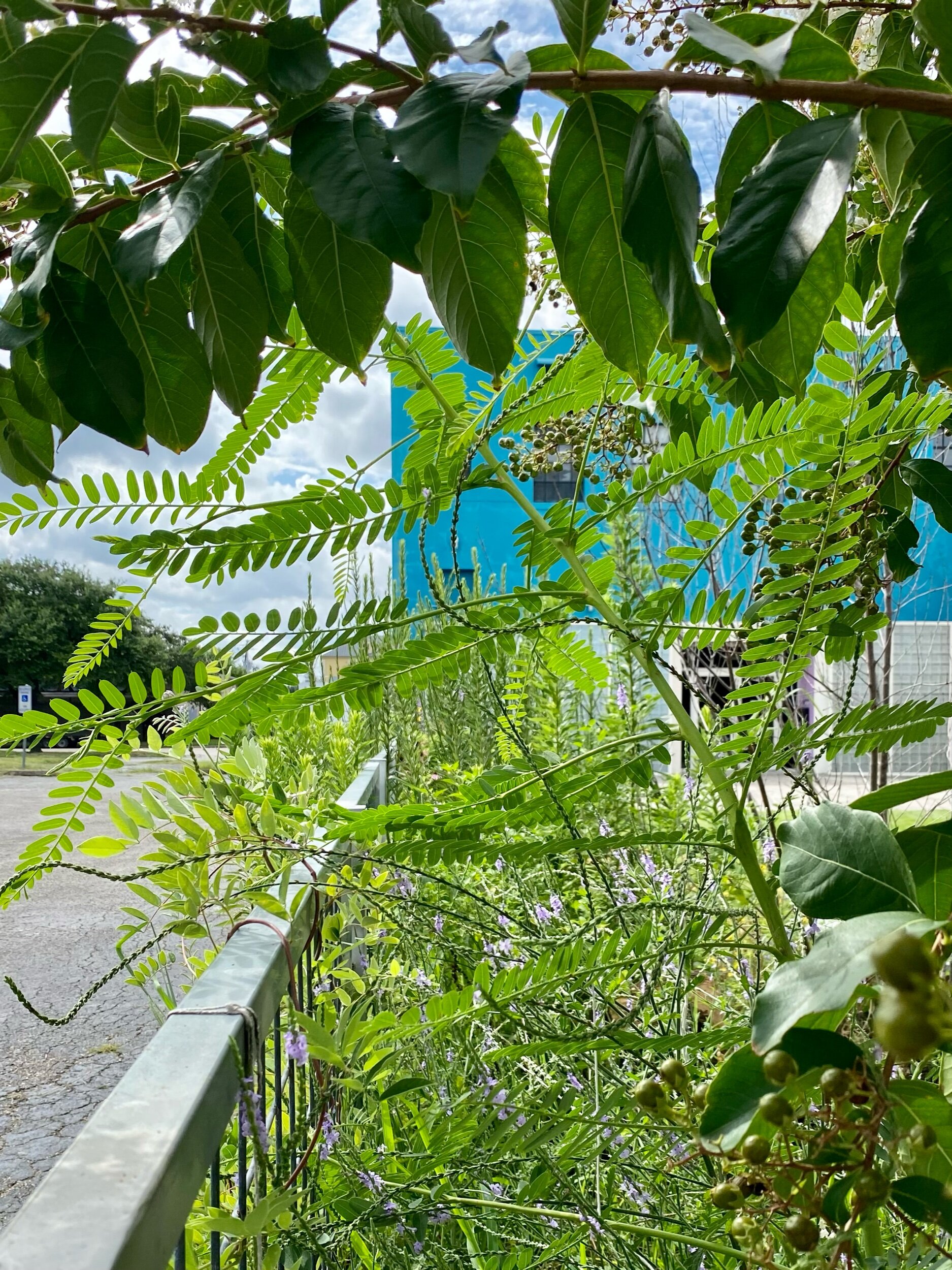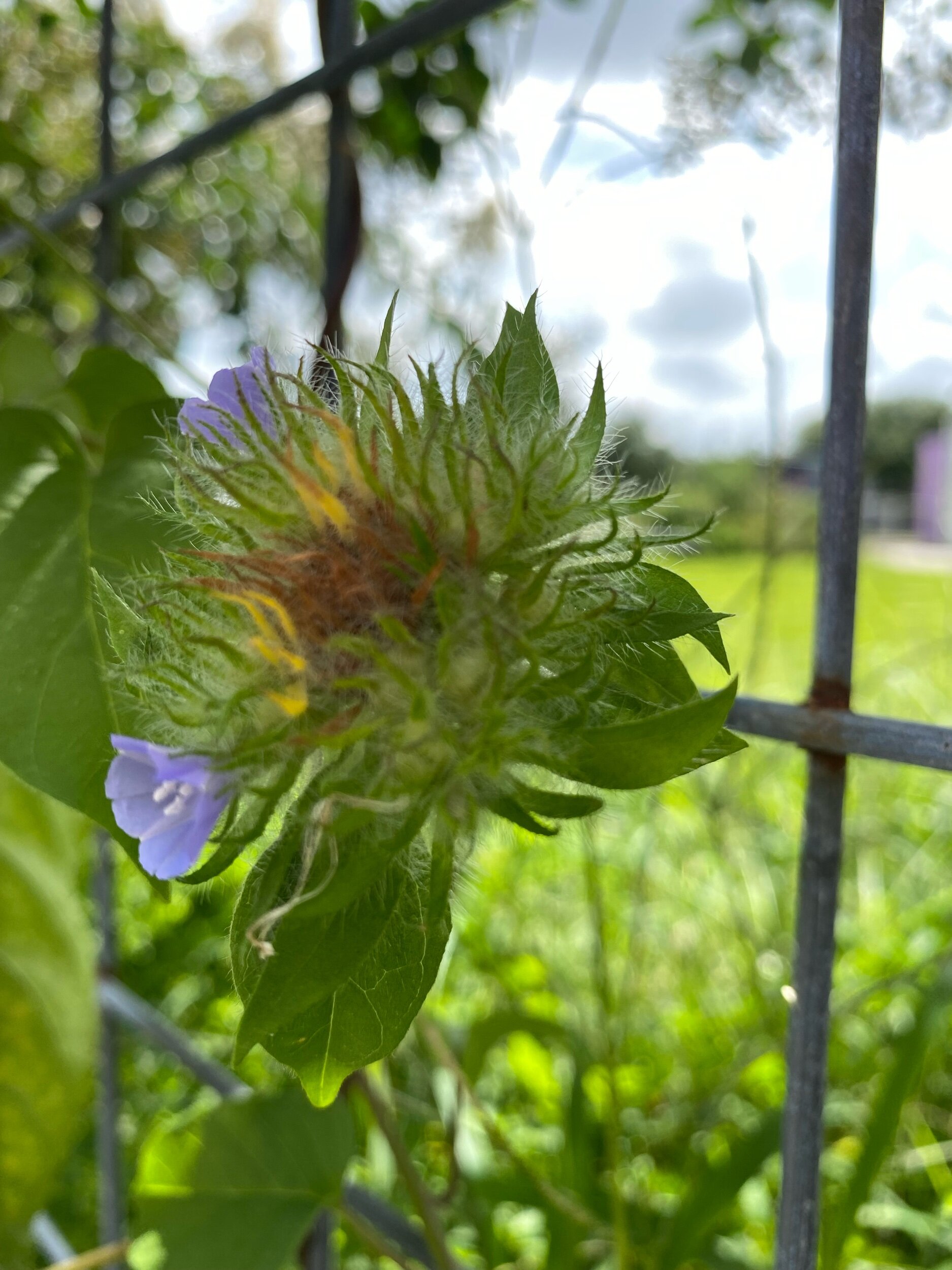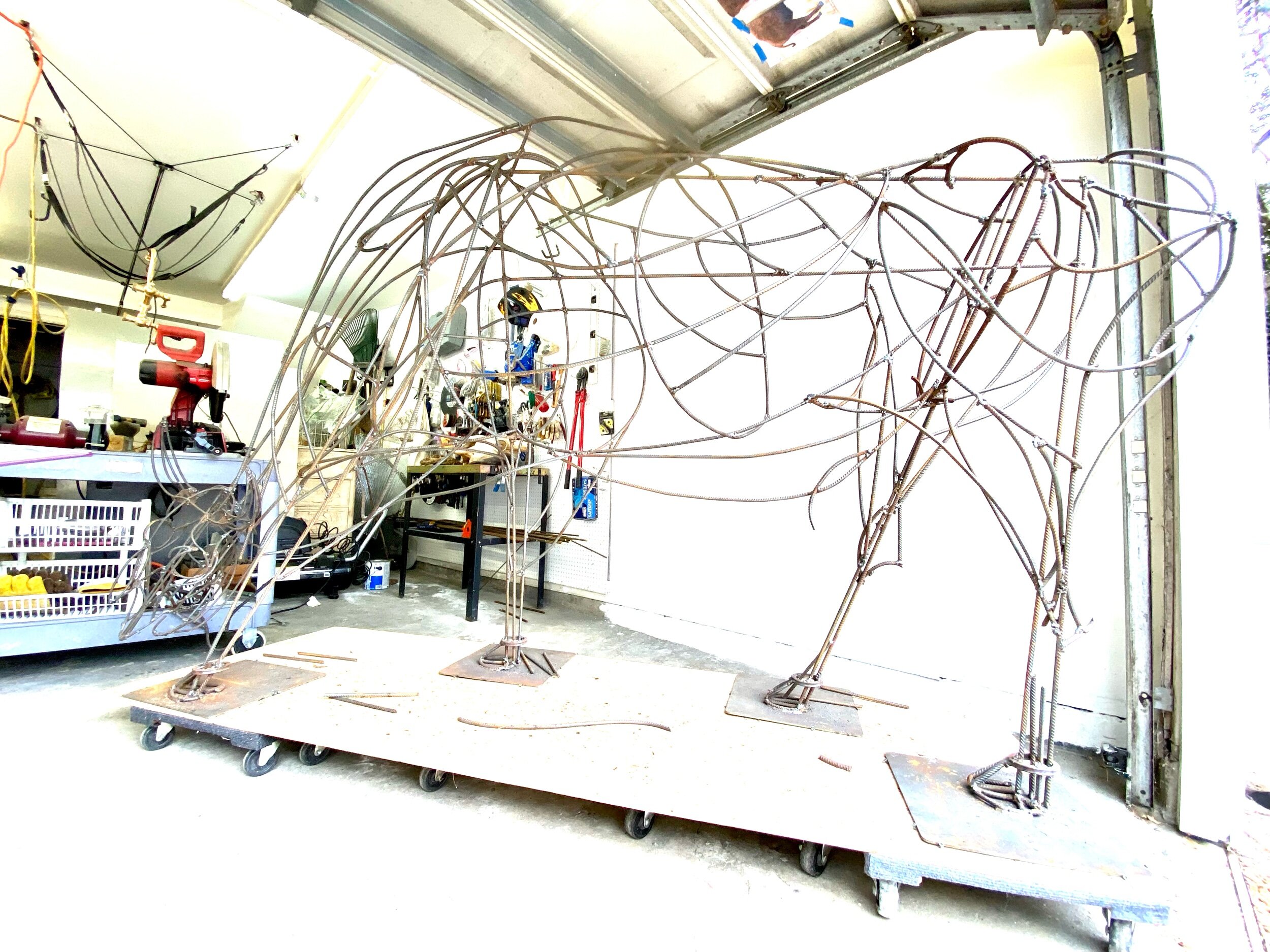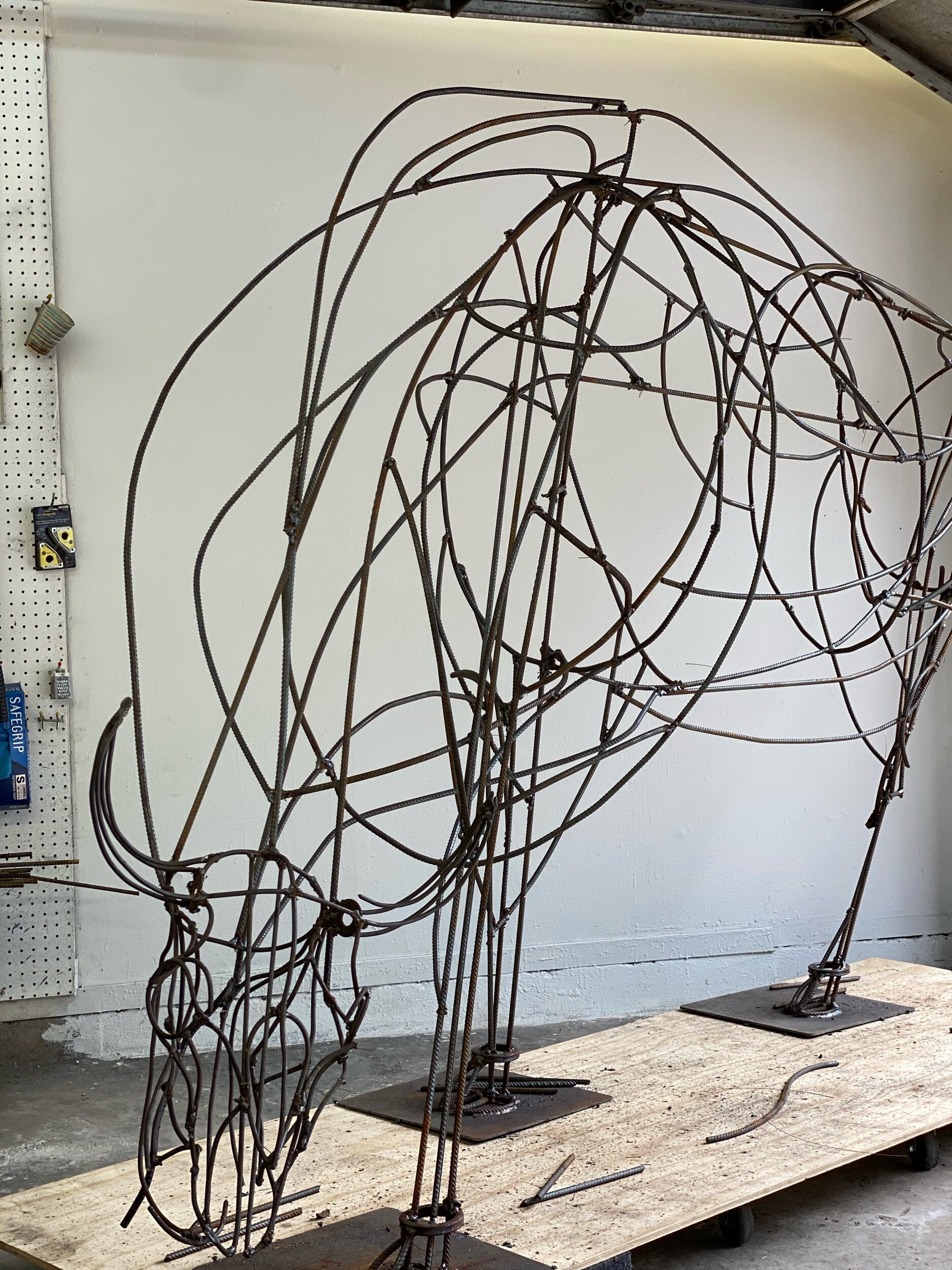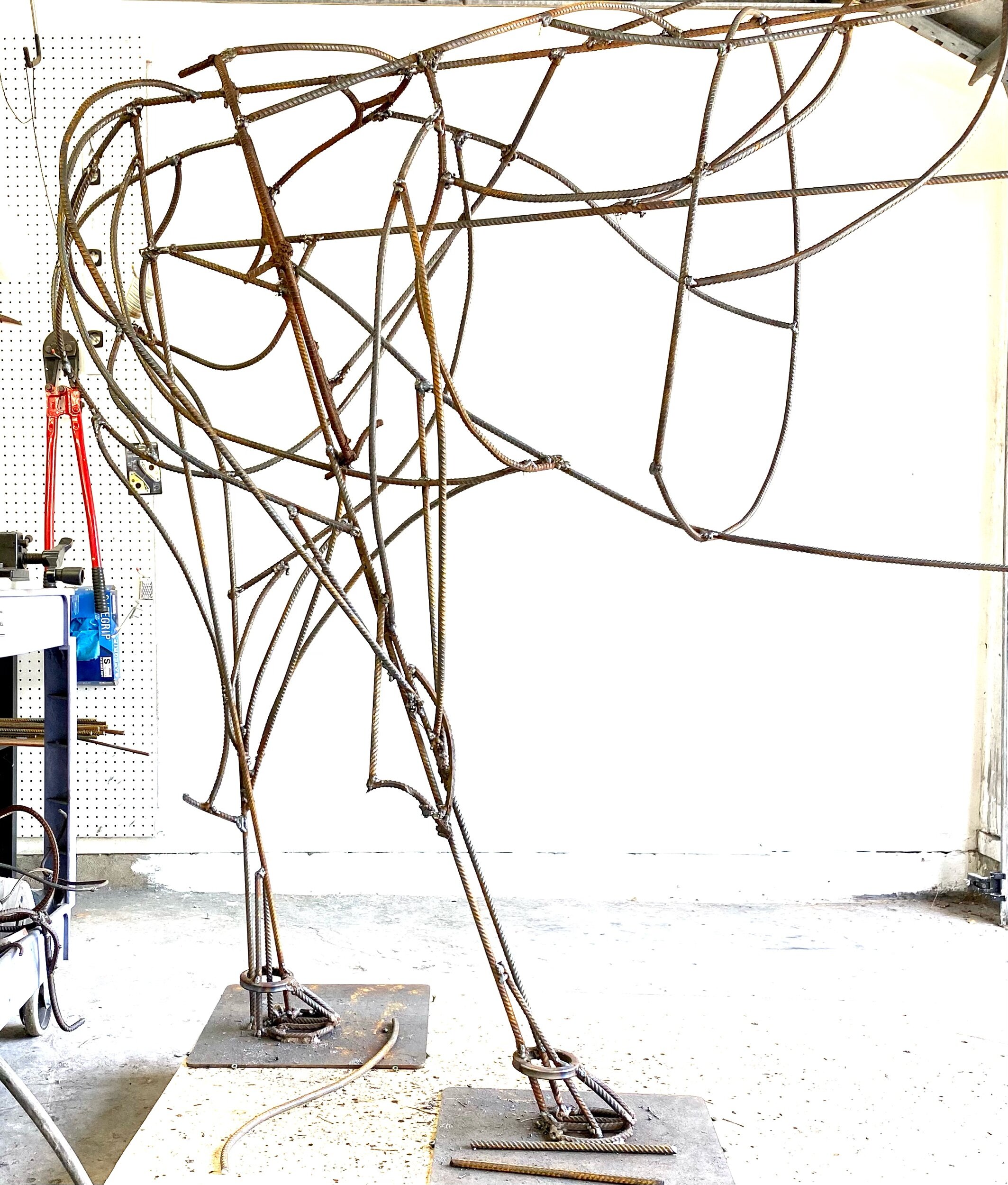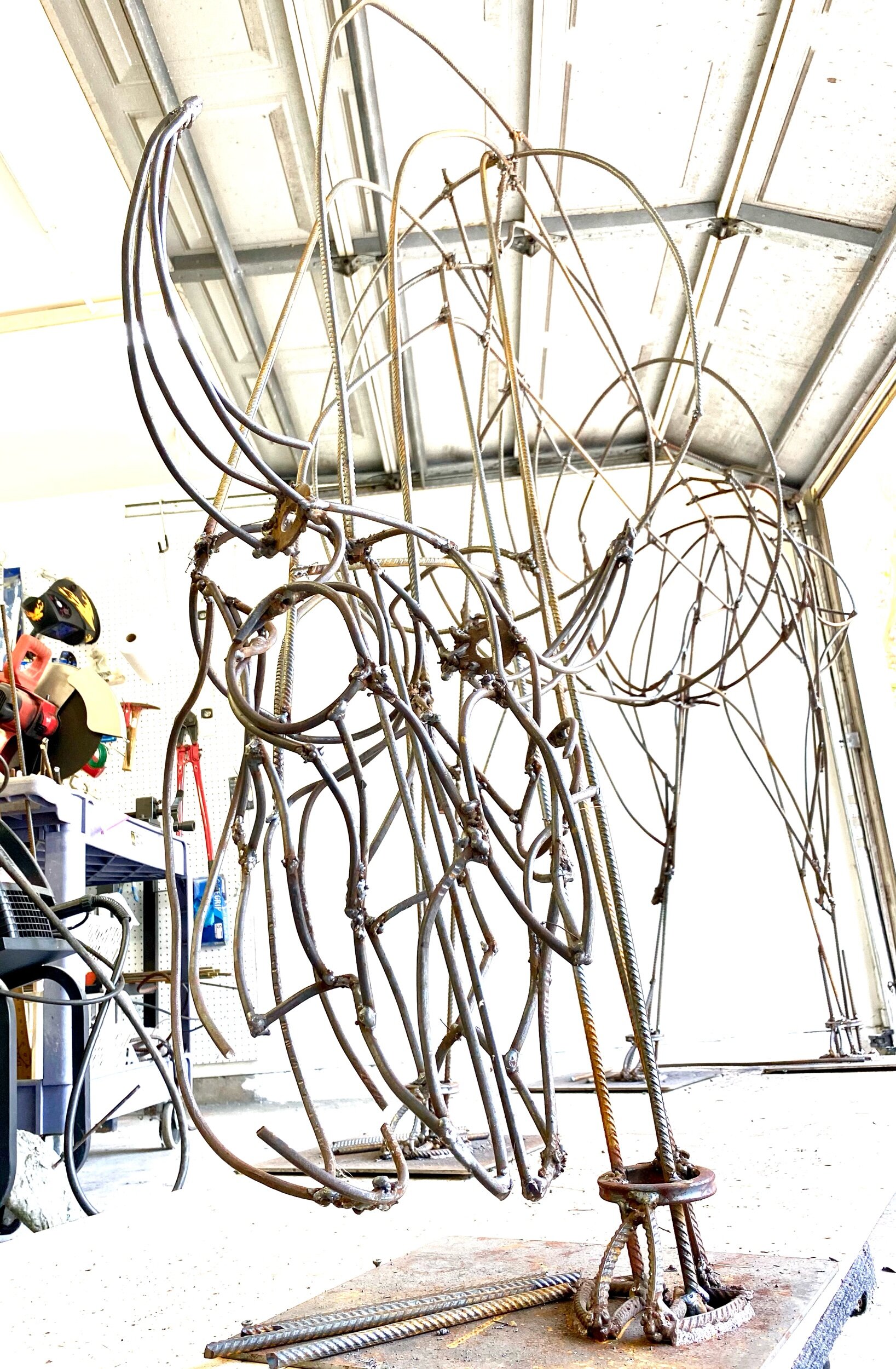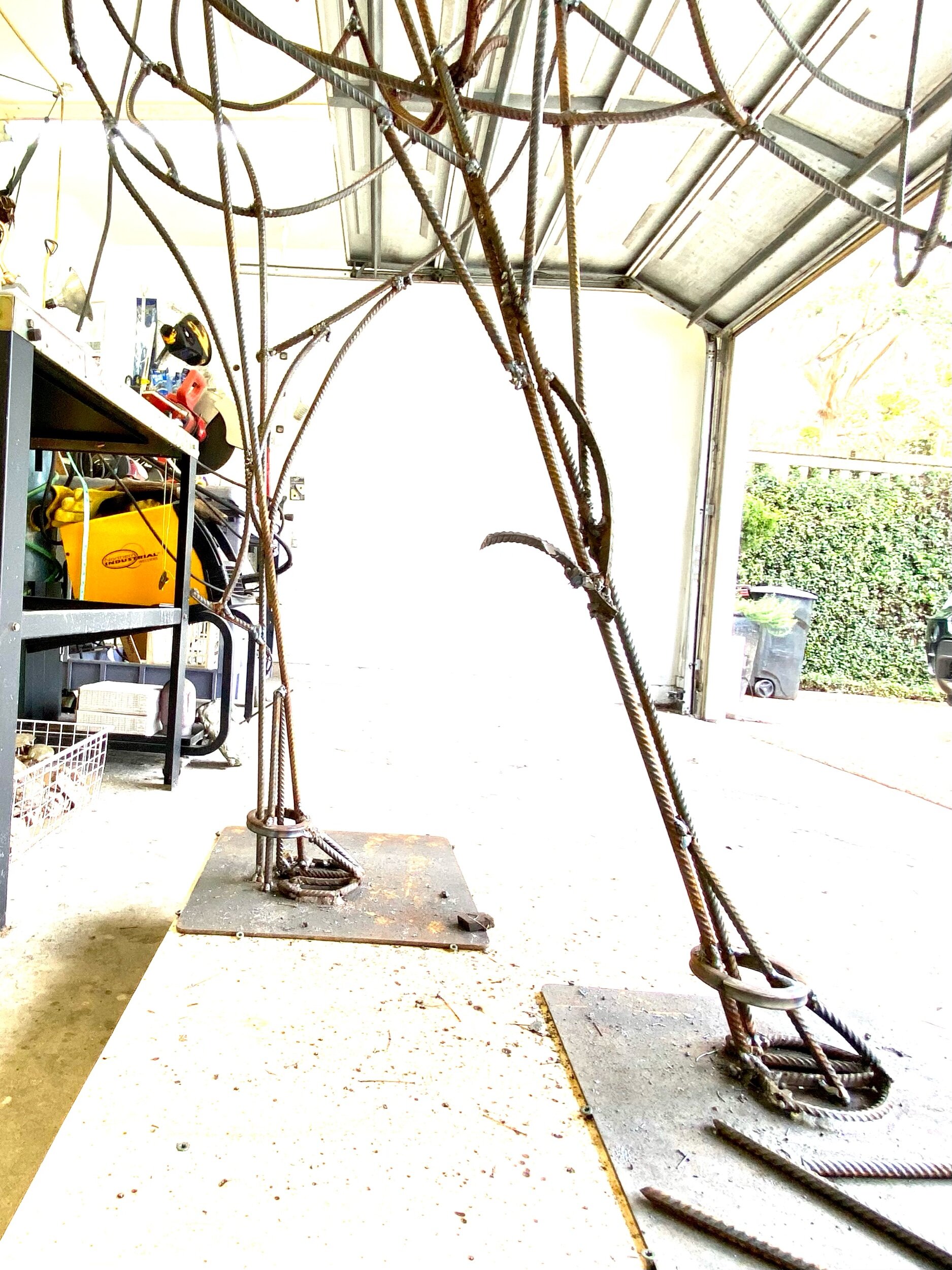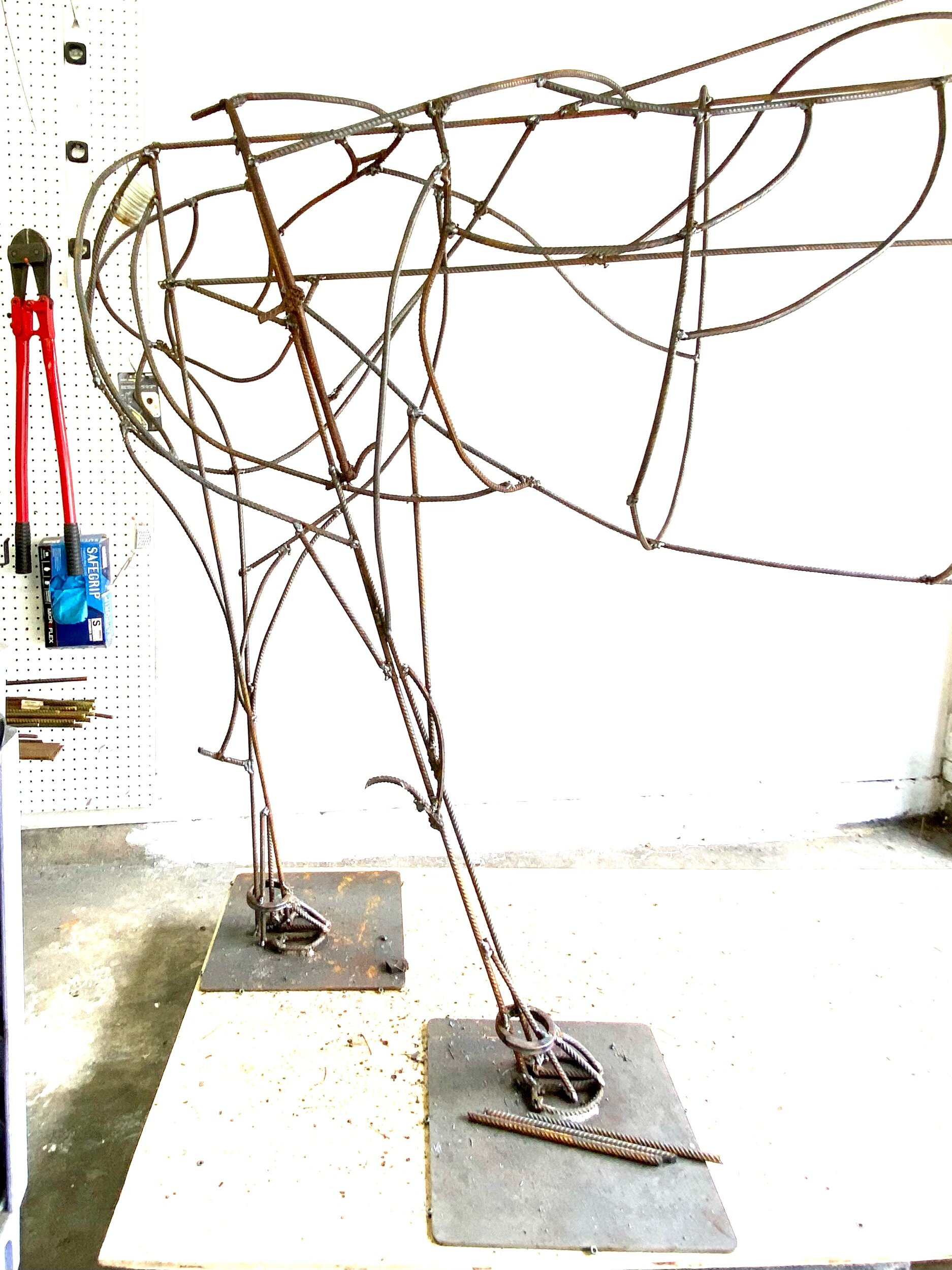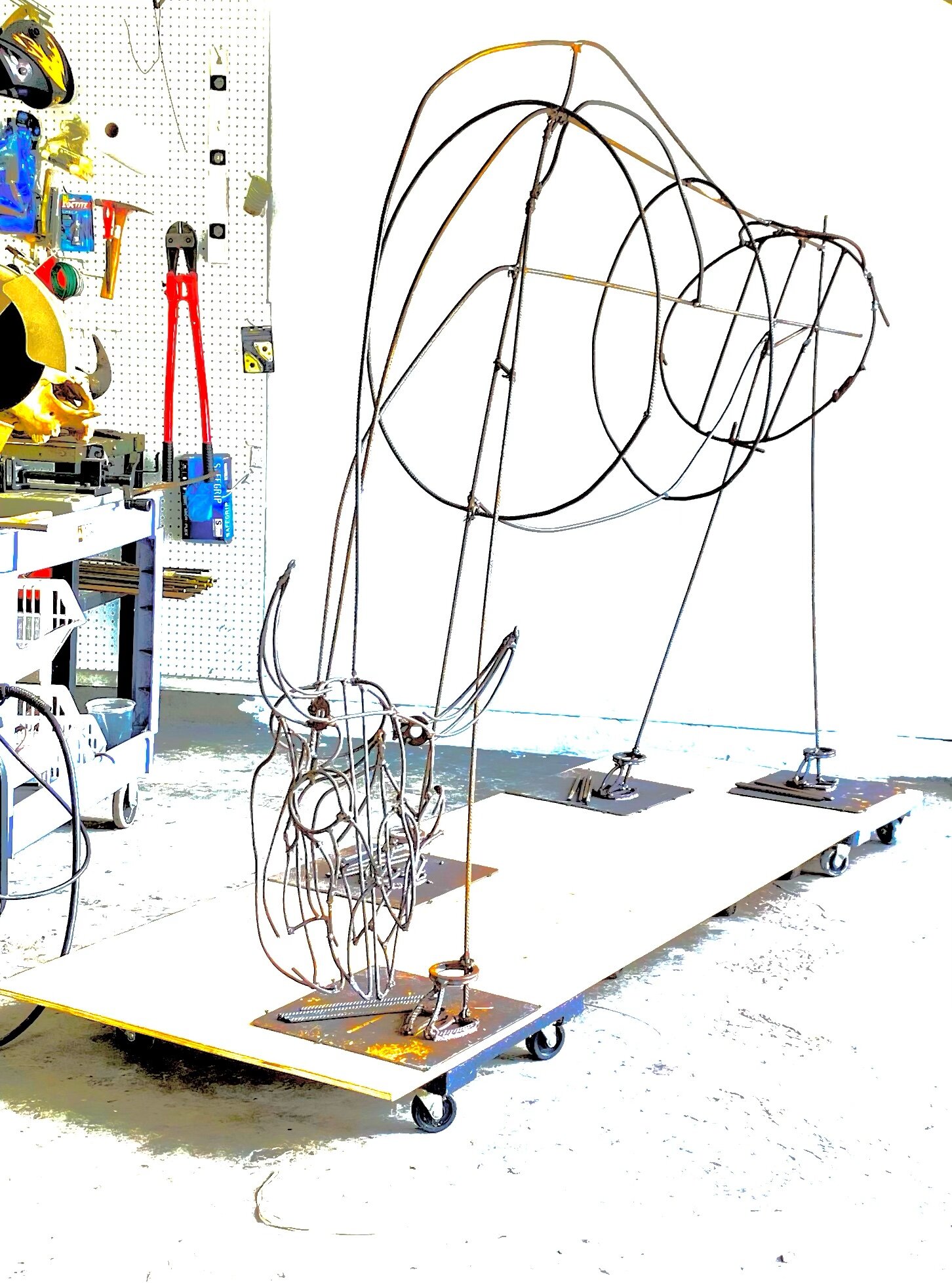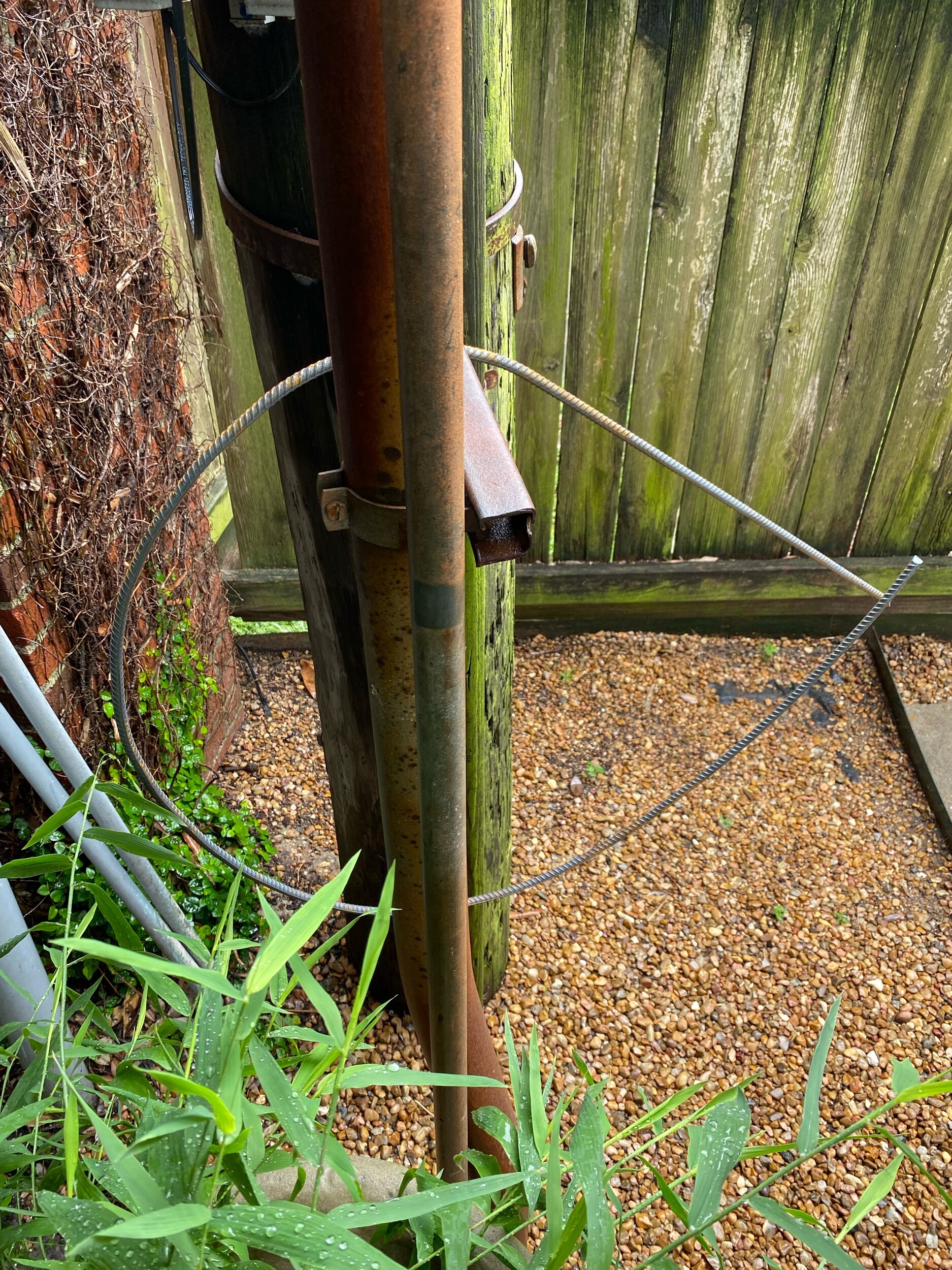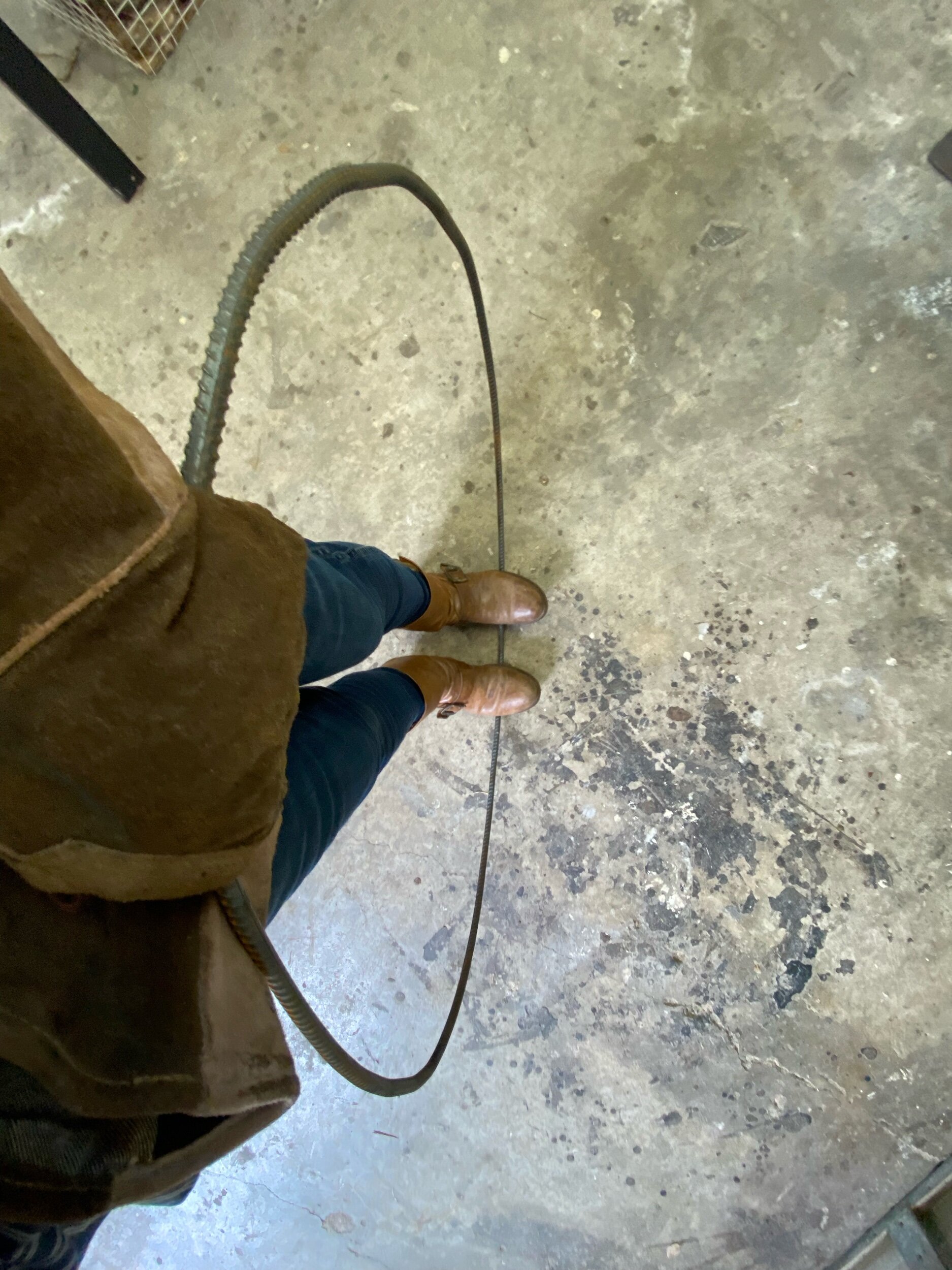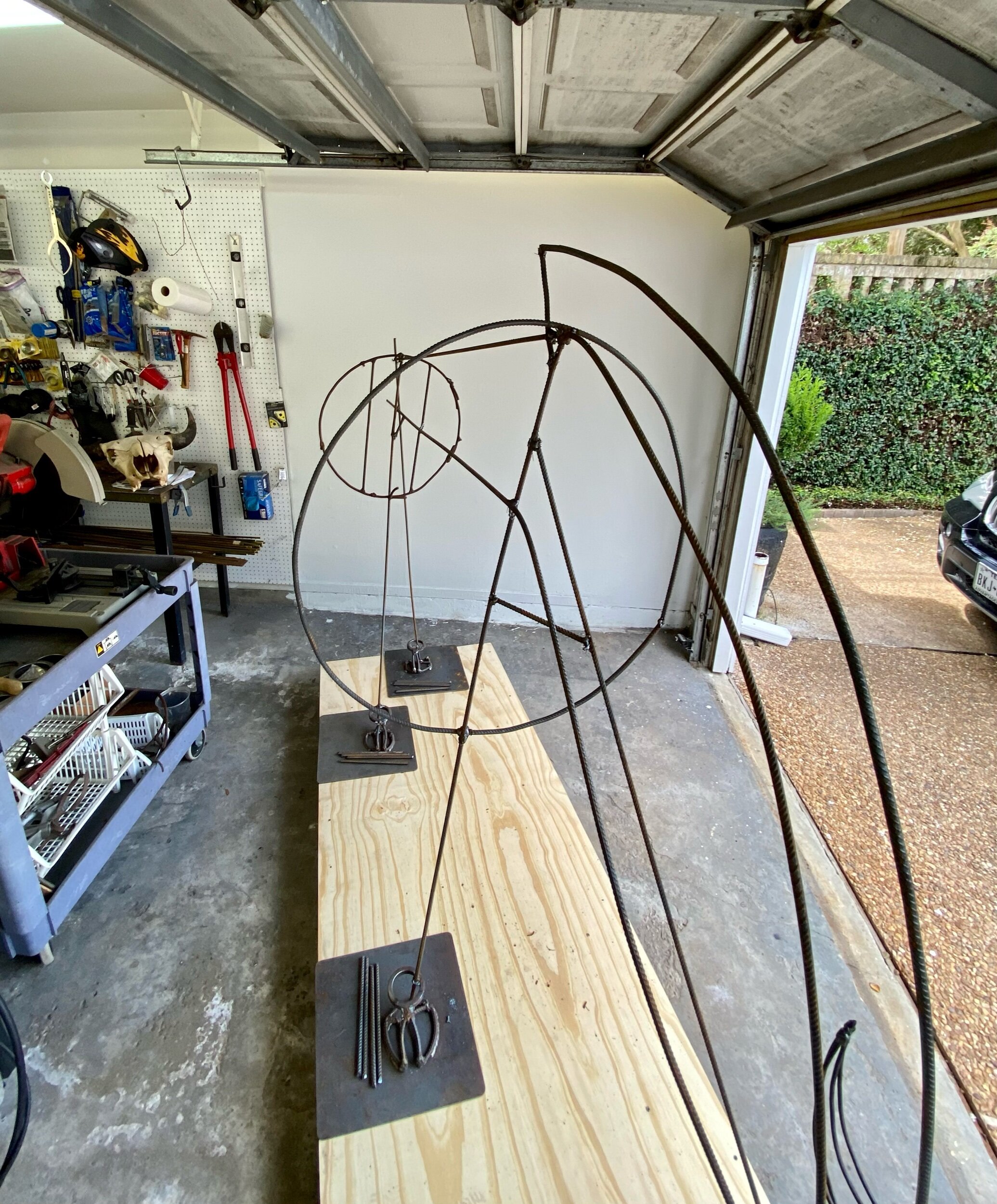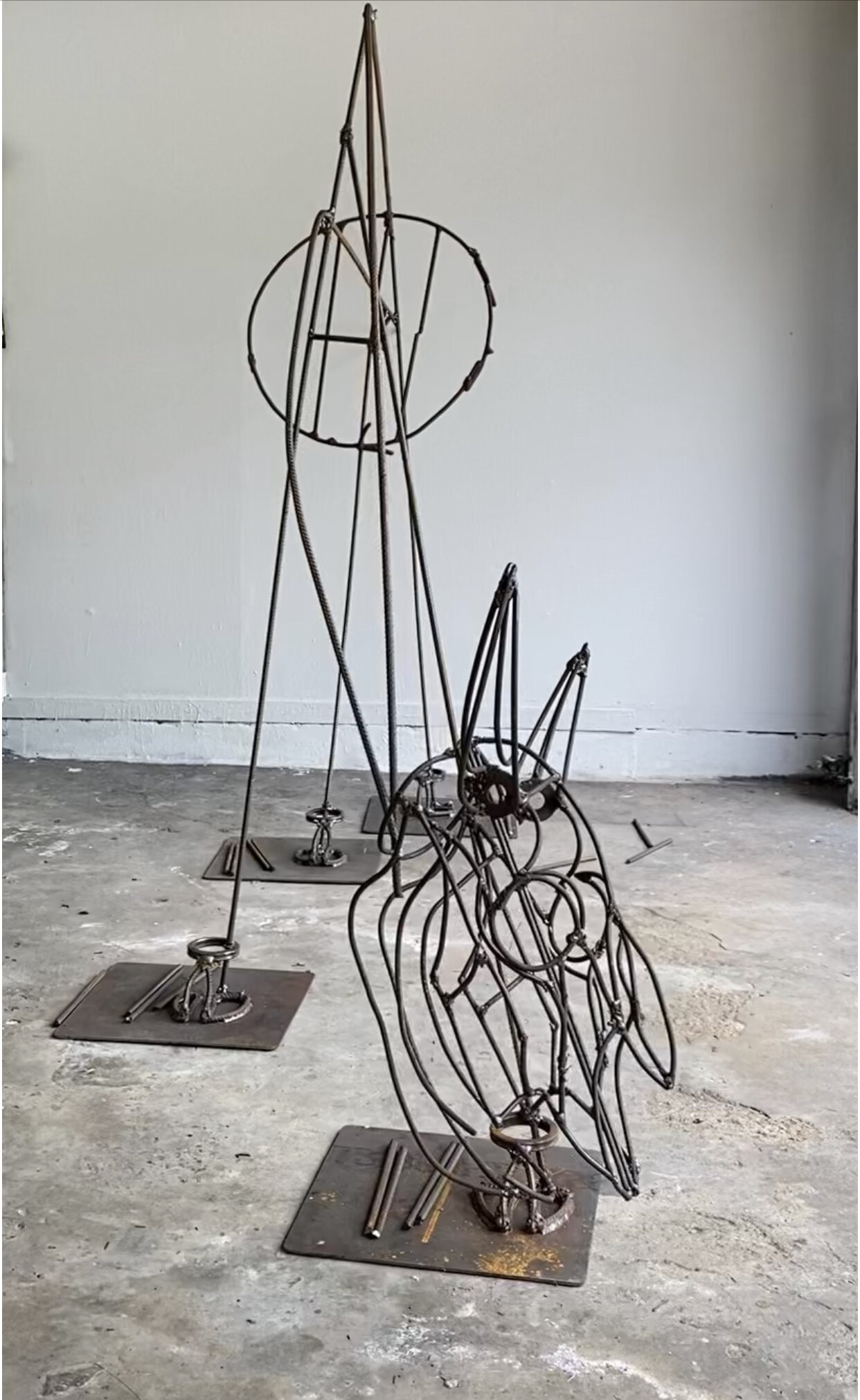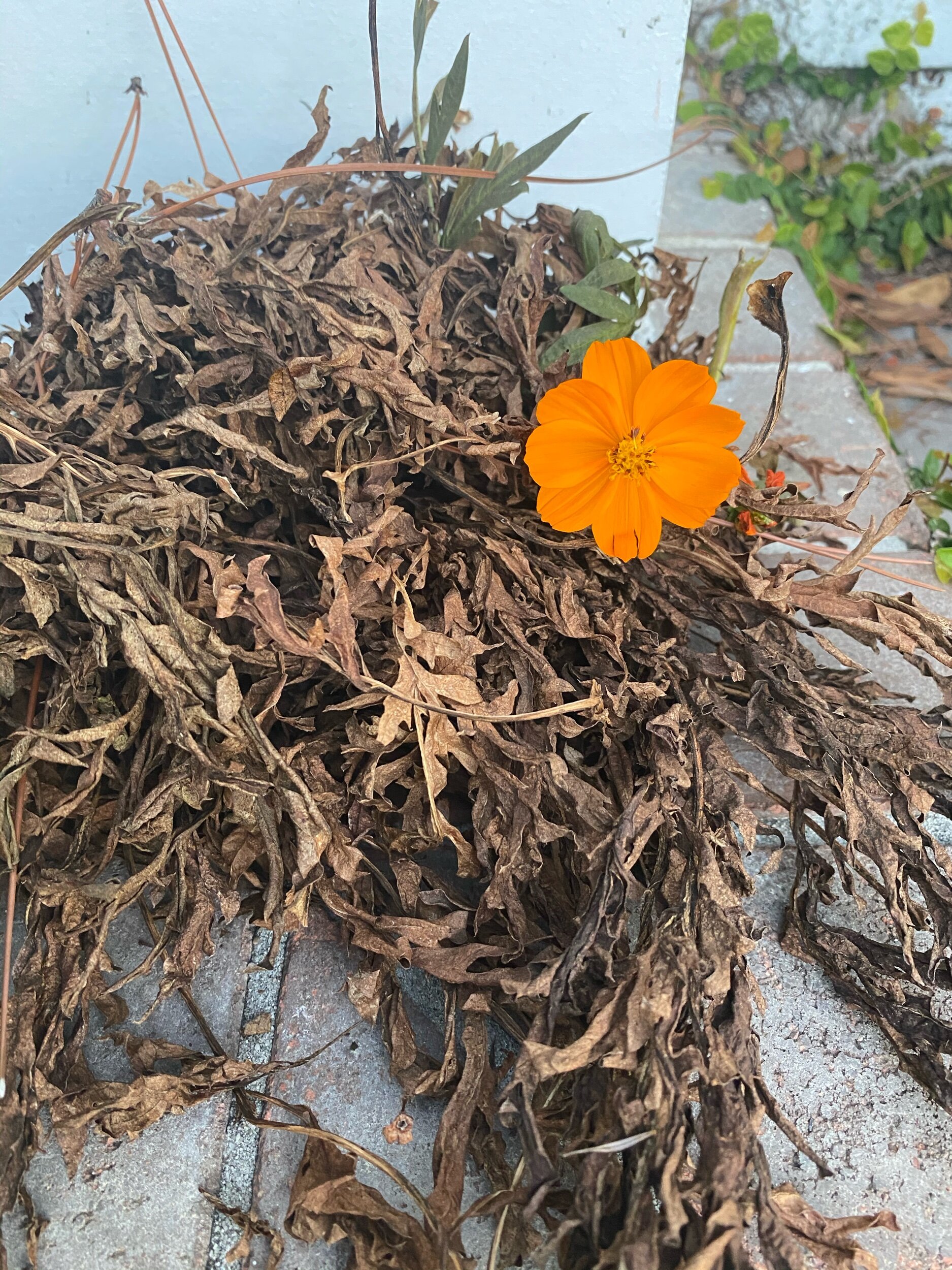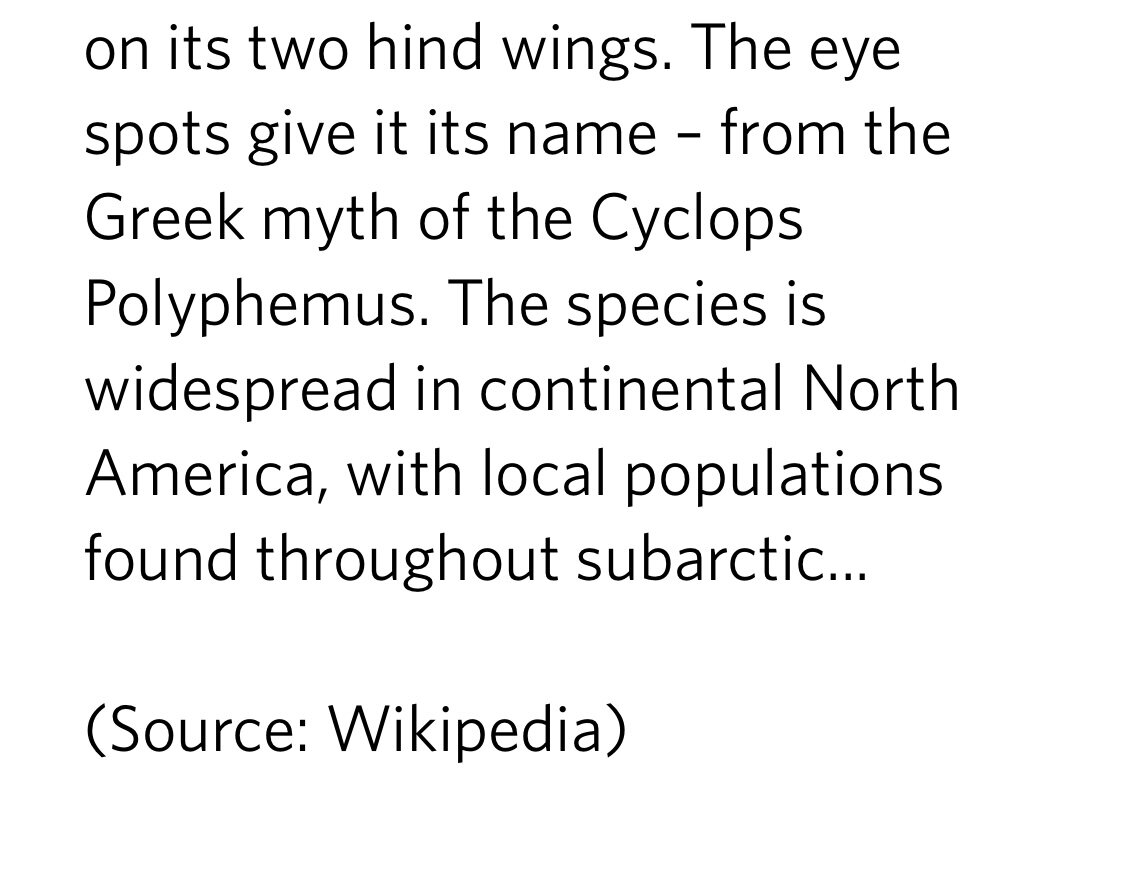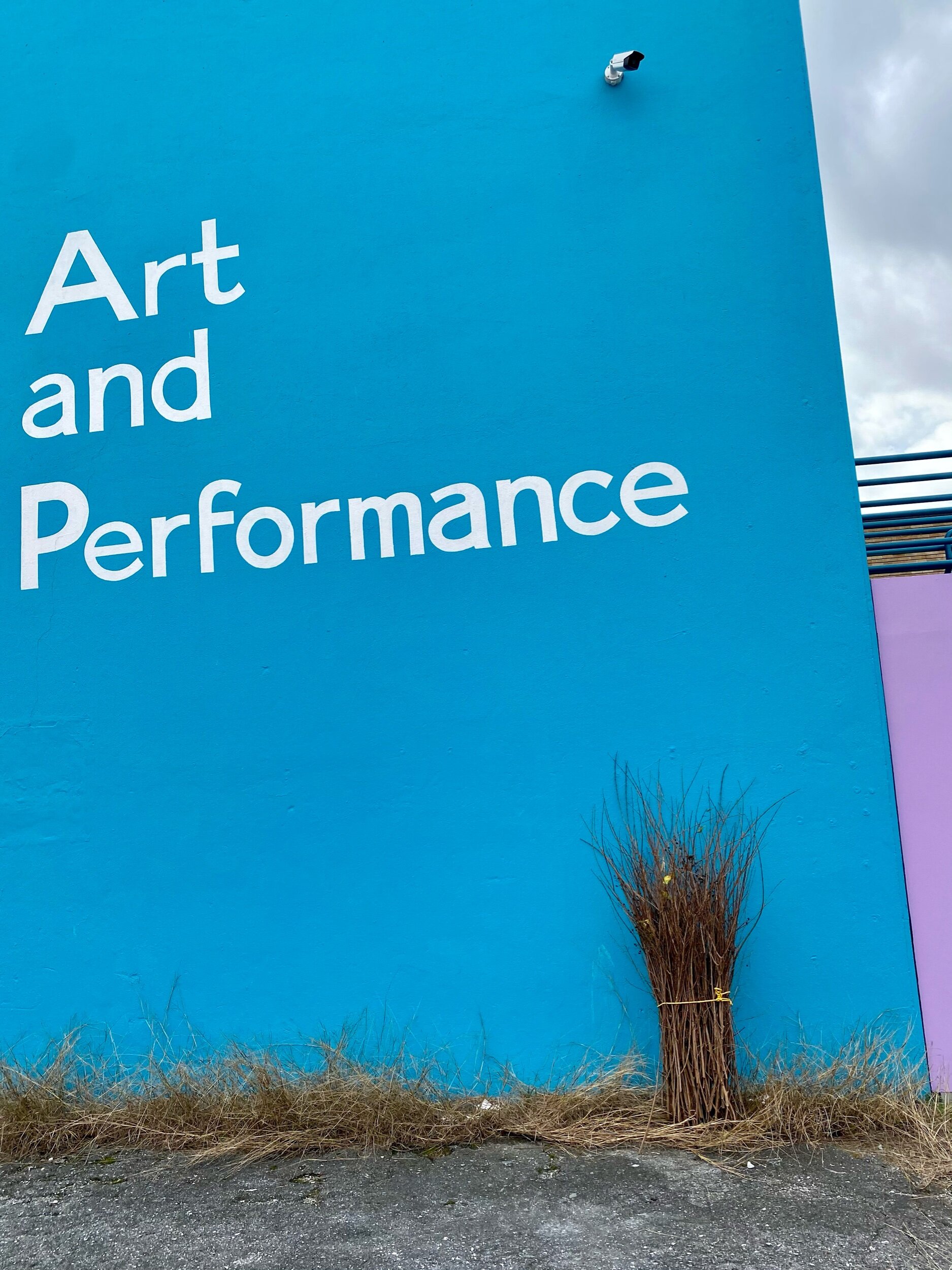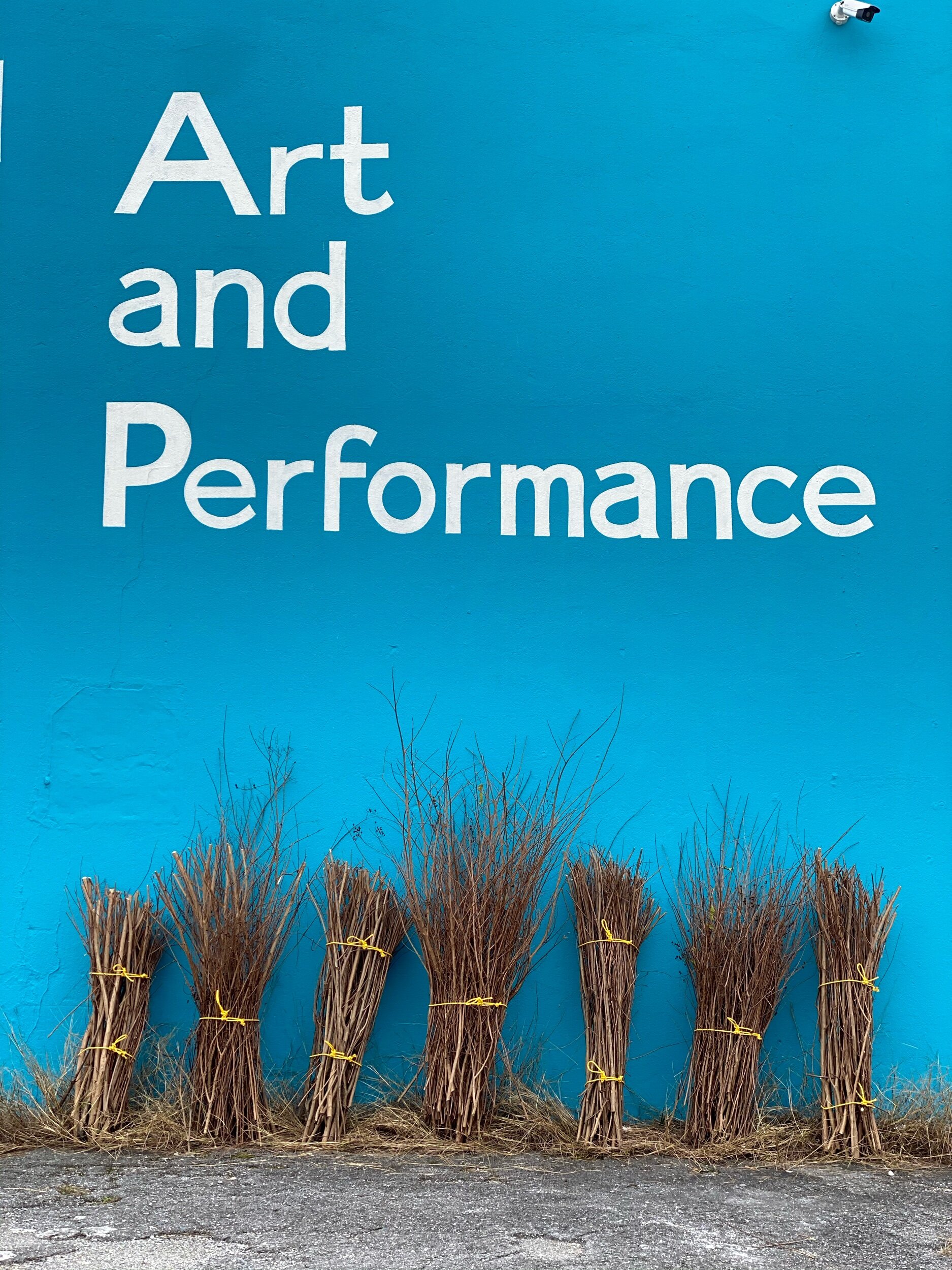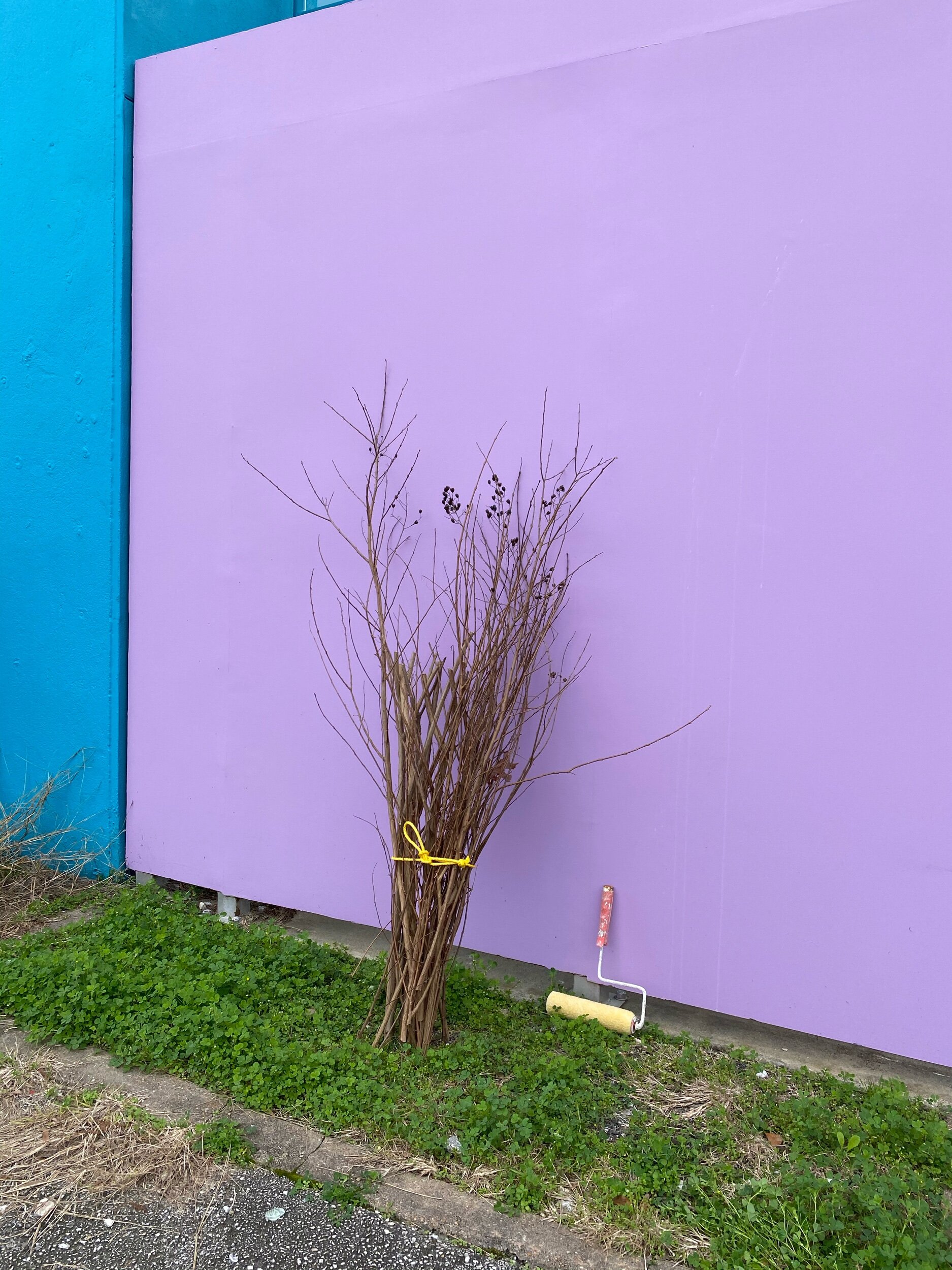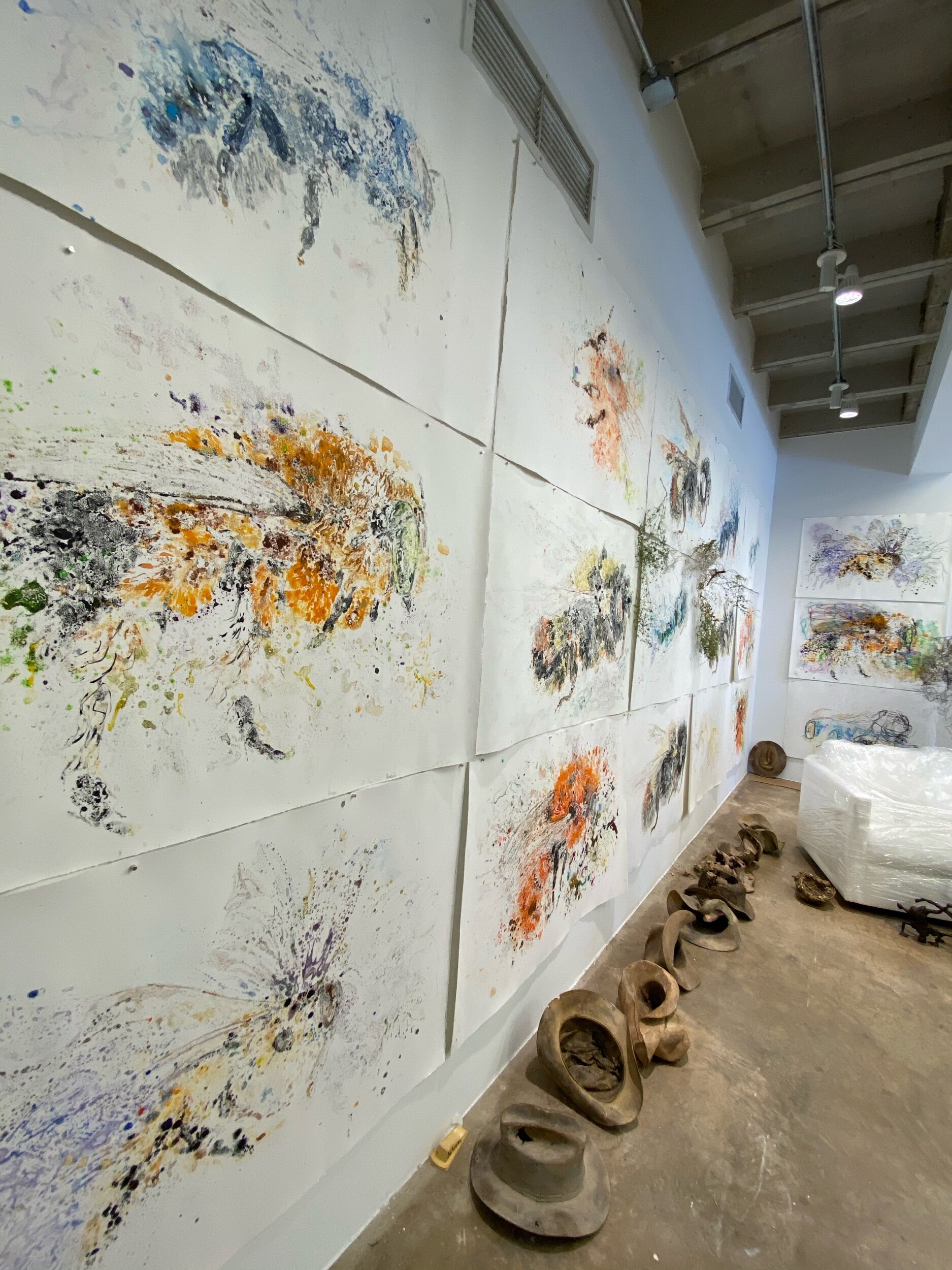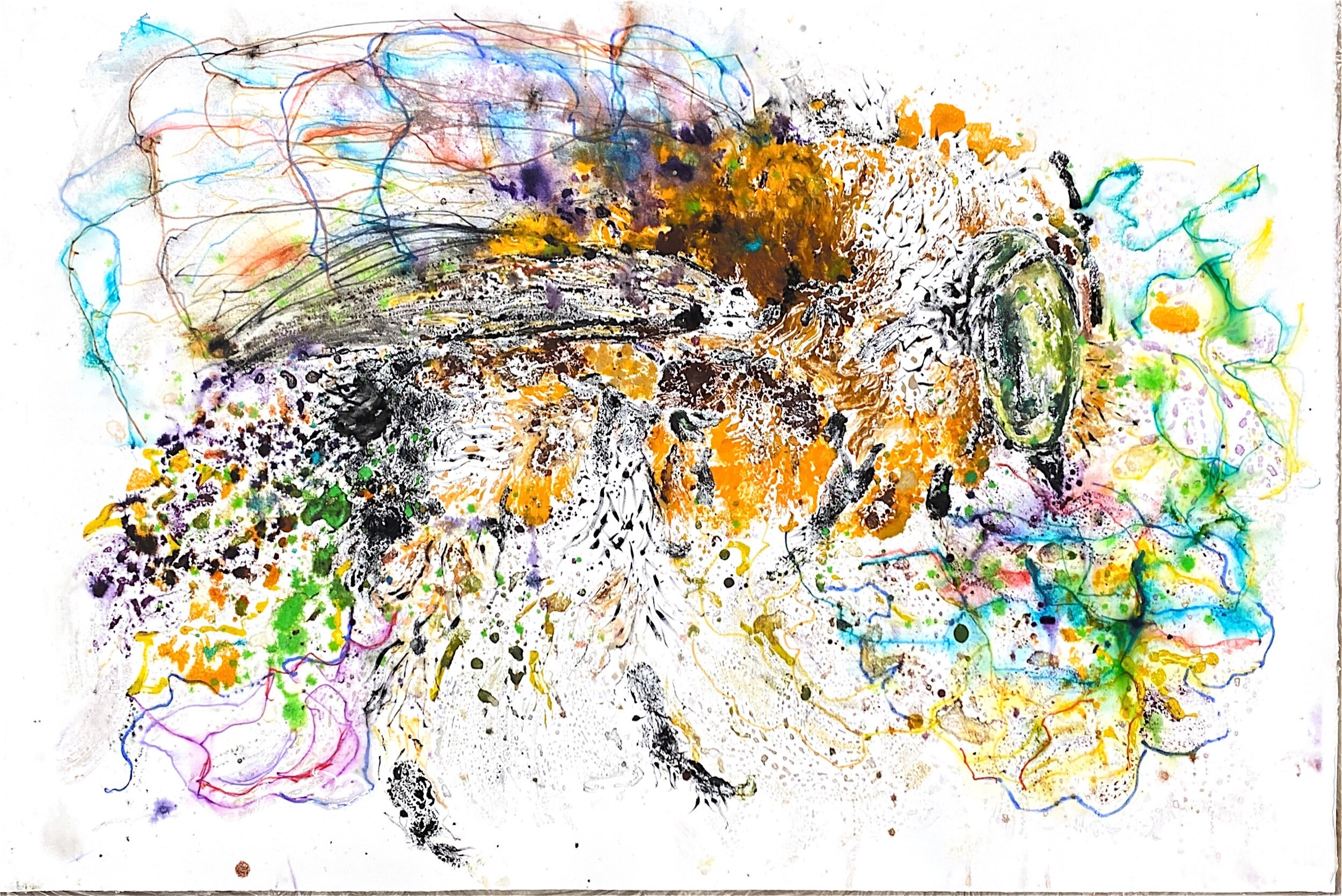4" X 13" X 8"
bronze
photo by Nash Baker
The sidewalks in my neighborhood are my nature trail. I walk with my eyes on the prowl for intriguing insects, exoskeletons, insect wings, feathers, dried flowers, twigs, leaves, seeds, and pods — things my children’s eyes taught me to find during our walks together over the years. Since 2013, these biological mementos have found their way into my bronze work in the molds of nests. Each piece is a reflection of that year’s ecology and records the time and movement of environmental restoration.
Initially, I was unaware of the landscape around me, but as my art dove deeper into environmental restoration and Hurricane Harvey changed our city, I realized that my days are, in fact, full of sterile surfaces. With COVID-19 quarantine, children in my neighborhood started venturing outside and looking for things to capture their curiosity. Delighted with their new interest, I realized that the green spaces and puddles children explore now are no longer filled with a diversity of life; the box turtles, bullfrogs, tadpoles, bumblebees, and assortments of flitting insects have evaporated with the spray of insecticides and herbicides in our neighborhoods. The selection is reduced to cicadas, the common beetle, honeybees, a rare native bee, and an abundance of Cuban lizards that dwell in turf grasses, boxwoods, crepe myrtles and oaks. I have awakened to cultural landscape uniformity. COVID has changed how I see the need for perfect lawns; the dirty truth is mosquito home-misting machines, obsessive weed control, artificial turf and a lack of plant diversity have turned urban neighborhoods into manicured monocultures for humans exploring video games. These habitat changes in massive population centers are fast-forwarding evolution: loss of wildlife habitat is one of the biggest threats facing many animal species. This does not have to be—it is a societal choice, the ability to speed up evolution can go both ways. Through my works – Lawndale’s Symbiosis, Endangered Knowledge: The Soul of Humus, Gust, World of Hum, Rumblings and Root to Water—I am committed to creating work that educates and helps communities change how we landscape our cities to include valuing the natural world and turning back evolution.
In Dirt to Soil, Gabe Brown quotes Don Campbell, “If you want to make small changes, change how you do things, if you want to make big changes change how you see.” When I come across intriguing flora or fauna on my urban trail, albeit few and far between, I see them as evidence that can inspire a revolution in the landscape. If they are expired and will not decompose, I collect them. I see these bronze cast nests as urban wildlife fossils—biographies, every year a chapter recording Houston's environmental awakening. As an optimist—environmental—art—activist my work focuses on revealing endangered knowledge to change how we see urban landscapes and activate cooling the planet through our cityscapes. As migratory birds return year after year to build nests and raise their young, I return with optimism in my step. I envision witnessing the return of four hundred plus butterfly species and eight hundred bee species native to Texas. I can see this returned wildlife capturing my future grandkids' imaginations. I will tell them the story of how insects almost disappeared and how every yard is a micro-ecosystem and matters. I imagine their hands building nests with a diversity that I cannot imagine. I hear their voices telling me in one breath about the fuzziest-biggest bee they ever saw, covered in golden dust nesting in a patch of ground beneath the sunflowers not far from the silverleaf nightshade. I see them bringing me a tail-feather from a Red Shoulder Hawk and asking, "what does it hunt" and is it the bird that sounds like the squirrel's screech. After a rain, I see them finding two bullfrogs attached and their tiny ribbons of floating eggs in a pond. I hear them tell me not to touch the caterpillar of the southern flannel moth, and asking me, “how does it sting?”. At the low of evening when dragonflies hover; I will watch as they study the night heron’s quiet solitary stance as it stalks small citizens of the grass, I will smile as they question the raucous warnings of ravens and the scoldings of nut collecting squirrels. I will feel their excitement when neighborhood raccoons appear from storm sewers and scavenge treats from dog bowls and opossums waddle fence lines, searching out grubs and open garage doors. I will follow their eyes when the silent patrol of the lone coyote visits the shadows of our boulevards from their bayou bound dens. I let them sleep outside and hear their heavy eyelids ask, why do the owls ask who? I listen as they wake up to a concert of white-winged doves. I will feel peace when they are wise to nature.






